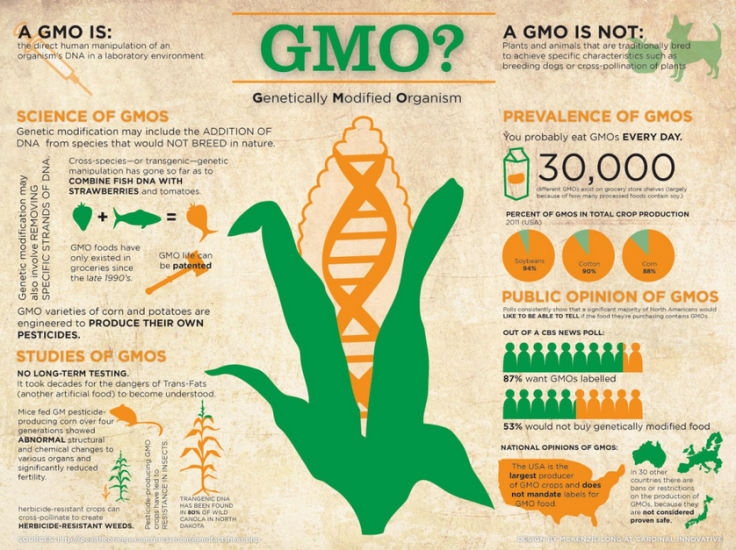GMO Foods: Here’s All You Need To Know About Genetically Modified Organisms

We’ve been conditioned to avoid genetically modified organisms (GMOs) at all costs, but how many of us really know what we’re dealing with when it comes to the direct manipulation of an organism’s DNA in a laboratory setting? Food containing GMOs only started appearing on grocery store shelves back in the late 1990s, so it makes sense that no long-term testing has been conducted as of yet. Unfortunately, most people eat GMOs every day, so adequate research is needed to establish safety levels.
Genetic modification can include the addition of DNA from species that would not breed in nature or removing specific strands of DNA. Some GMO varieties of corn and potatoes have even been engineered to produce their own pesticides. Due to how many processed foods contain soy, around 30,000 different GMOs can be found on the shelves of your local grocery store.
Despite all the negative media attention GMOs get here in America, the U.S. is surprisingly more lax when it comes to GMO production compared to other developed countries. In fact, 30 other countries have issued bans or restrictions on the production of GMOs because they are “not considered proven safe.” The U.S., on the other hand, is the largest producer of GMO crops and doesn’t even mandate labels for GMO food.
A recent poll conducted by CBS News found that 87 percent of the sample population want GMOs labelled, while 53 percent said they would not buy genetically modified food.
Published by Medicaldaily.com




























